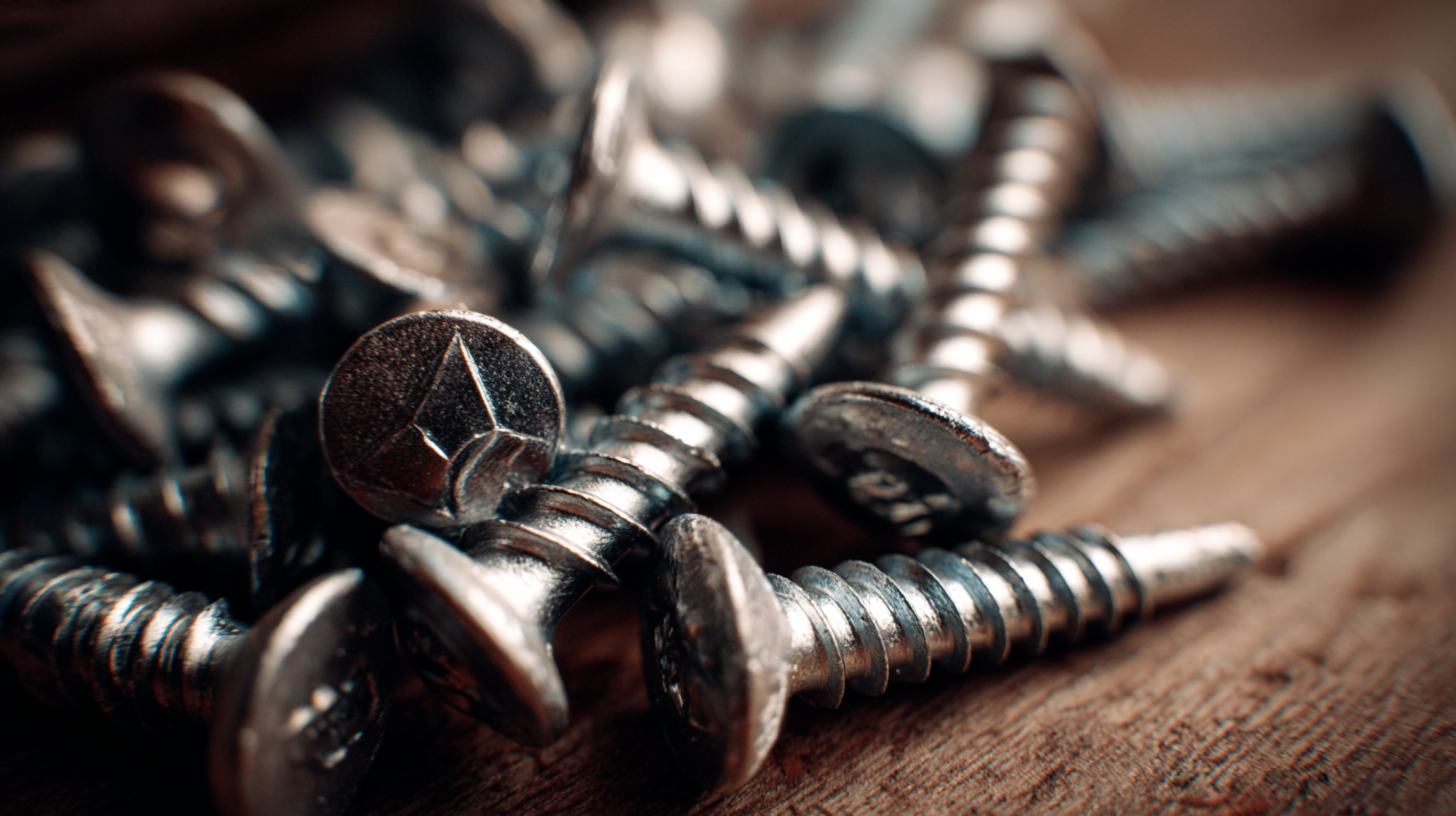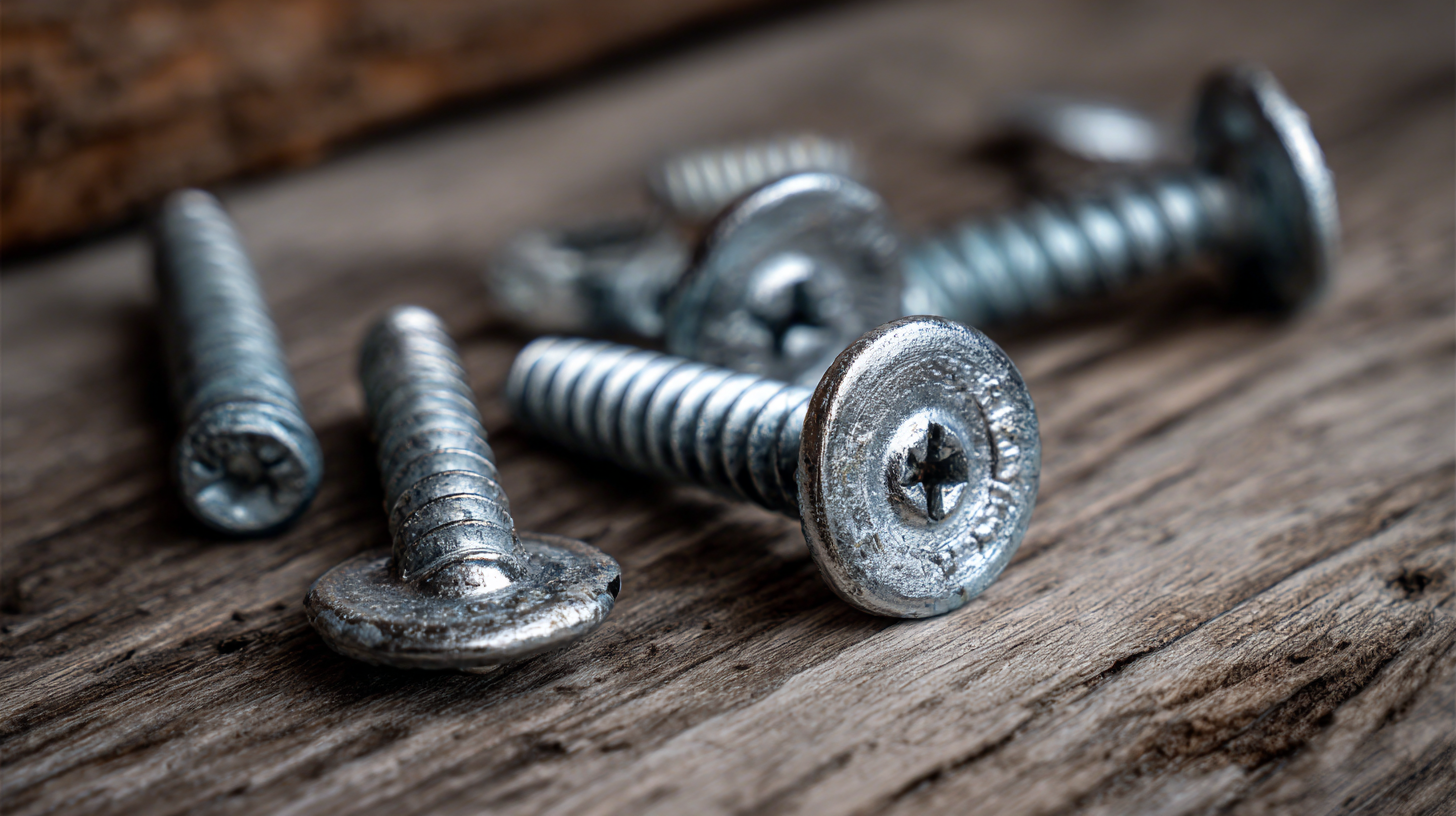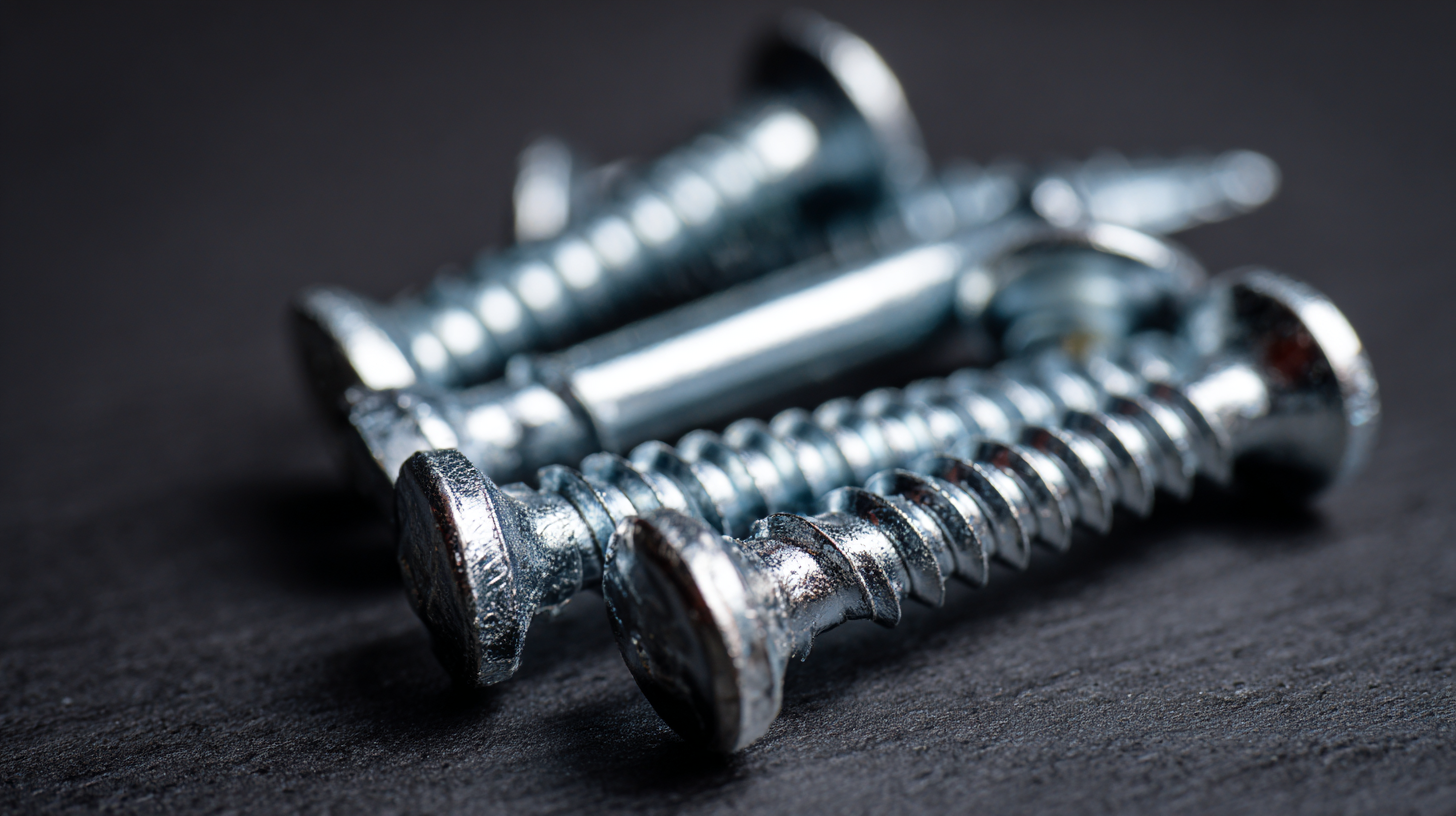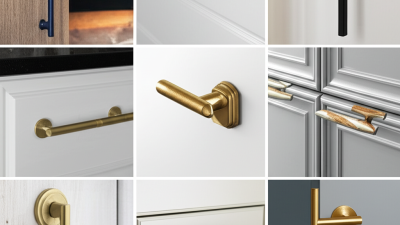
- wzqb@qb-inds.com
- Mon - Sat at 7:00AM to 6:00PM
Essential Checklist for Choosing the Right Plasterboard Screws for Your Next Project
Table of Contents
- Understanding Different Types of Plasterboard Screws for Optimal Results
- Key Factors to Consider When Selecting Plasterboard Screws for Your Project
- Comparing Materials: Steel vs. Stainless Steel Screws for Plasterboard
- Length and Gauge: How to Choose the Right Size of Screws for Your Needs
- Common Mistakes to Avoid When Buying Plasterboard Screws
- Top Recommendations for the Best Plasterboard Screws on the Market Today
- FAQS
- Conclusion
- Related Posts
 When it comes to construction and high-end manufacturing, tiny choices—like what kind of materials and fasteners you go with—can really make or break the durability and overall quality of a project. One thing that often gets overlooked is picking the right Plasterboard Screws. Believe it or not, industry experts say that about 65% of construction failures are actually linked to using the wrong fastening systems. That just shows how important it is to choose carefully.
When it comes to construction and high-end manufacturing, tiny choices—like what kind of materials and fasteners you go with—can really make or break the durability and overall quality of a project. One thing that often gets overlooked is picking the right Plasterboard Screws. Believe it or not, industry experts say that about 65% of construction failures are actually linked to using the wrong fastening systems. That just shows how important it is to choose carefully.
At Wenzhou Qiangbang Industrial Co., Ltd., which has been around since 2003, we totally get the challenges involved. That’s why we focus on delivering top-notch solutions through thorough research, development, and manufacturing. We combine R&D, production, sales, and support to make sure our clients get the best tools and advice—like our expertly-made Plasterboard Screws, designed to handle the tough demands of today’s building projects.
To help you out, we’ve put together a simple checklist to guide you in selecting the right Plasterboard Screws—so you can rest assured your project will have the strength and success it deserves.
Understanding Different Types of Plasterboard Screws for Optimal Results
When you're starting a construction or renovation project, picking the right plasterboard screws is super important if you want things to stay solid and hold up well over time. There are quite a few types out there, each suited for different jobs. For example, if you're screwing plasterboard into wooden studs, coarse-thread screws usually do the trick because their deeper threads grip better. On the flip side, for metal studs, fine-thread screws are the way to go—they slide in easier and there's less chance of stripping the material. Interestingly, data from the Gypsum Association shows that using the correct thread type actually cuts down the risk of damaging the material by about 30%, which is pretty significant.
Another thing to keep in mind is the screw head design. Flat-head screws are great if you want a smooth, flush finish—perfect for taping and finishing joints. Meanwhile, bugle-head screws are favored because they cut down on paper tearing, making the joints look neater. A report from the Building Research Establishment mentioned that choosing the right screw type can cut down repair work by around 20%. That just highlights how important it is to pick the proper screws for your project. Getting these details right not only boosts the quality of your work but also helps you save time and money in the long run.
Key Factors to Consider When Selecting Plasterboard Screws for Your Project
When you're choosing plasterboard screws for your project, there are a few key things you really want to think about to get the best results. First off, the type of plasterboard you're working with should pretty much dictate which screws you pick. For standard plasterboard, coarse-thread screws work great because they grip securely. But if you're dealing with moisture-resistant or fire-rated boards, you'll want to find screws that are specifically made for those materials—they'll hold up better and last longer.
Another really important thing is the length of the screws. You want to make sure they're long enough to go through the plasterboard and reach into the framing behind it. Usually, screws range from about 25mm to 50mm long, depending on how thick your board is. Don’t forget to take into account not just the plasterboard but any extra layers or insulation you might have installed.
Here's a handy tip: before you start screwing everything in, do a quick weight test with the screws you're planning to use. It’s a good way to see if they’ll hold up when it really counts. Also, if you’re using a screw gun, try to keep your torque setting adjustable. That way, you can avoid over-driving the screws and accidentally damaging your plasterboard—it’s a little thing but makes a big difference!

Comparing Materials: Steel vs. Stainless Steel Screws for Plasterboard
When you're picking out the right plasterboard screws for your project, it's pretty important to understand the differences between steel and stainless steel screws. Both are super common in construction, but they each have their own quirks that can really affect how well your stuff holds up. From what I’ve seen in industry reports, steel screws are often the go-to because they’re cost-effective and strong. But, heads up—if you're working in a damp or humid area, they can rust or corrode pretty easily, which might cause some issues down the line.

On the flip side, stainless steel screws might cost a bit more, but they’re fantastic in terms of resisting corrosion—definitely the better choice for projects exposed to moisture. Studies even show that stainless steel screws can last up to five times longer than regular steel ones in tough conditions. Here at Wenzhou Qiangbang Industrial Co., Ltd., we really believe that choosing the right materials is key to getting the best results. Since we kicked things off back in 2003, our focus has been on developing top-quality fastening solutions. We mix R&D, production, sales, and service all together to support your project, no matter what you need.
Length and Gauge: How to Choose the Right Size of Screws for Your Needs
When you're picking out plasterboard screws for your next project, it's really important to get a handle on the length and gauge of the screws you choose. The Gypsum Association points out that standard drywall is usually about half an inch thick, so you want screws that can go in deep enough without punching through or damaging what's underneath. Most folks recommend using screws that are around 1 to 1 1/4 inches long for 1/2 inch drywall. That way, you get a good grip for stability but aren't risking breakage or making it too tough to work with.
Now, about the screw gauge — this actually matters a lot because it affects how strong the screw is and how well it holds things together. Industry experts usually suggest going for screws with a gauge between 10 and 12 for most home projects. According to the American Society for Testing and Materials (ASTM), thicker screws (which means lower gauge numbers) tend to handle shear stress better — especially if your space has temperature swings or humidity changes. So, by paying attention to both length and gauge, you'll make sure your plasterboard setup is not just sturdy but also safe and reliable.
Essential Checklist for Choosing the Right Plasterboard Screws
Common Mistakes to Avoid When Buying Plasterboard Screws
When you're picking out plasterboard screws for your project, avoiding those common mistakes can really make a difference in how everything turns out. For instance, one pretty common slip-up is grabbing the wrong type of screw. A lot of DIYers might just go for regular screws, but plasterboard screws are a whole different ballgame—they come with special threads and coatings that help prevent stripping and give you a solid, tight hold. Skipping this step can lead to a shaky install and more hassle later on.
Another thing to watch out for is screw length. Using screws that are too short might mean they don’t hold everything in place properly. But if they’re too long, they could poke through the back of the plasterboard or even damage what's underneath. That’s why it’s super important to think about the thickness of your plasterboard and what you’re attaching before picking the length.
Also, don’t forget about the drive style—using the wrong drill bit can cause the screw heads to strip or make driving them in way more difficult than it needs to be. When you keep these little things in mind, your project's gonna go much smoother and you’ll end up with a much better result, no doubt.
Top Recommendations for the Best Plasterboard Screws on the Market Today
When you're picking out plasterboard screws for your next project, it’s pretty important to choose the right ones — because it can make a real difference in both how smoothly everything goes and how long your work lasts. The market is packed with options, so it’s worth knowing which screws actually suit your needs. A few good tips? Look for screws with a sharp tip—they make drilling in much easier. Coarse threads are usually better for grabbing onto the plasterboard securely, and if you want your screws to stand up to the elements, go for the ones with a corrosion-resistant coating.
Oh, and here’s a quick tip: think about the thickness of your plasterboard. For the standard 12.5mm boards, 25mm screws tend to do the trick. But if you're working with thicker stuff, like say 15mm or more, then 38mm screws are probably your best bet for a solid hold.
Another thing to keep in mind? Try to find screws with a head design that gives you better grip and torque. This helps prevent stripping and makes screwing everything in much easier.
And before you dive into the real deal, it’s a smart move to do a little test run. Take a scrap piece of plasterboard and try out your chosen screws first. It can save you a lot of hassle down the line—that way you know what to expect and can fix any issues early on.
FAQS
: The typical thickness of standard plasterboard is 1/2 inch.
A common recommendation is to use screws that are 1 inch to 1 1/4 inches in length for securing 1/2 inch drywall.
The gauge of the screw influences its strength and holding power; lower gauge numbers (thicker screws) offer better shear resistance.
Industry guidelines suggest using screws with a gauge of 10 to 12 for most residential applications.
A common mistake is choosing the wrong screw type, such as opting for standard screws instead of specialized plasterboard screws.
Selecting screws that are too short can result in inadequate hold.
Using overly long screws may pierce through the back of the plasterboard or damage underlying structures.
Using the wrong drive style can lead to stripped heads or inefficient driving, causing frustration during installation.
Avoiding common mistakes can significantly impact the outcome of the work, leading to better installation and reduced labor in the long run.
Conclusion
Hey there! In this post, I want to walk you through the essential checklist when it comes to choosing the right plasterboard screws for your next project. Honestly, understanding the different types of screws out there makes a huge difference — the right ones can totally boost the stability and lifespan of your work. We’ll cover things like the materials—comparing steel versus stainless steel—and also chat about the right length and gauge, so you can make smarter choices that fit what you really need.
I’ll also point out some common mistakes people tend to make when shopping for plasterboard screws — stuff to watch out for so you don’t mess up. Plus, I’ll share some top picks from the market right now, based on what we know from working at Wenzhou Qiangbang Industrial Co., Ltd., a leader in making high-quality components. Whether you’re a DIYer or in construction, this guide’s here to help you pick the best plasterboard screws and get your project done right.
Related Posts
-

Leading Global Exporter of Best Lazy Susan Hardware for Your Supply Chain Needs
-

Top 5 Innovative Best Bolts Examples Revolutionizing Industrial Applications in 2023
-

Exploring Unique Alternatives to Traditional Knobs for Modern Design
-

Global Leaders in Cabinet Hardware Manufacturing Excellence
-

Unlocking Savings: How Best Lock Washers Reduce Repair Costs with Exceptional After-Sales Support
-

10 Tips to Optimize Your Best Pins Stock for Maximum Sales Performance
